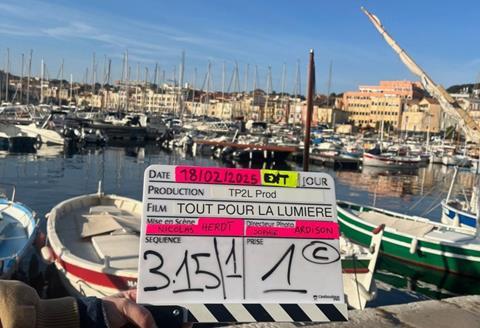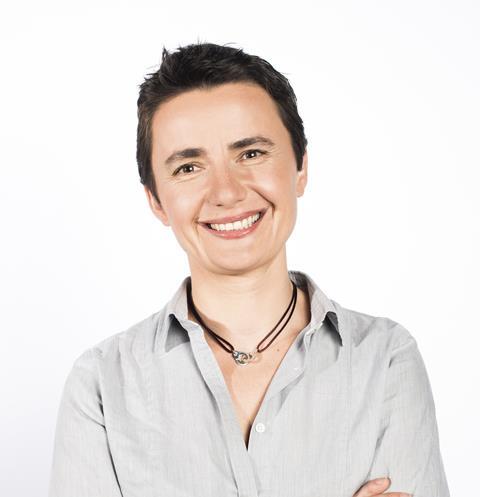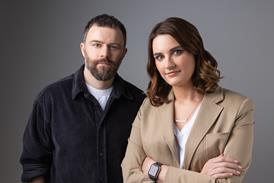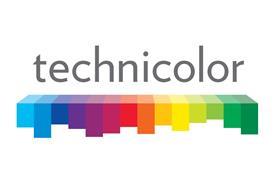With MPs calling for a domestic streamer levy, how are French attempts to regulate US streamers faring?
The Culture, Media and Sport Committee’s demand for a 5% levy on streamers provoked an immediate - and spiky - response from Netflix, so how are other countries looking to encourage investment while maintaining their domestic production industries?
Some eyes are turning to France. Its commitment to the creative industries is by no means new, but the country’s reaction to the influx of global streamers has still caused heads to turn across Europe and beyond.
Figures published in a November 2024 report from regulator ARCOM and film agency CNC underlined the extent of investment coming from companies such as Netflix and Prime Video.
And over the past few months, more US-based streamers have signed agreements with French producers’ unions, fine-tuning their domestic film and TV production obligations, while integrating themselves further into the French ecosystem.
Following the Prime Video and Netflix deals agreed in 2022-2023, January 2025 saw AppleTV+, Crunchyroll and Disney+ striking bespoke agreements that cover investment spending and windowing.
The Disney+ deal was even more decisive, because it allows the US-based service to stream films just nine months after their theatrical release, rather than the previous 17 months. In return, the streamer will invest 25% of its domestic revenues into French and European TV and film. But how did we get here and what can other countries learn?

Funding forerunner
France has had a sophisticated production regulation and funding system in place for decades, so it is perhaps little surprise that the country has become such a focal point for governments looking at how to incorporate streamers into local industries.
The country introduced production obligations to streaming platforms in mid- 2021 by publishing the SMAD (Service de Media Audiovisuels à la Demande) decree. It transposed the European Union’s 2018 Audiovisual Media Services Directive (AVMSD), which requires that streamers carry 30% of European works, and gives the possibility to each country to implement local obligations.
The decree put streamers on a par with traditional broadcasters, which need to abide by strict regulations in France: each must strike deals with regulatory body ARCOM and agree to a certain amount of local and European film and TV production across drama, animation and documentaries, including independent production (in which producers retain IP).
The system also requires broadcasters to contribute a tax, something that also applies to streamers and the sale of theatrical tickets, with revenue heading to funding body CNC, to which film and TV producers can then apply.
Under the SMAD decree, streamers must invest 20% of their French revenues in domestic and European productions after they reach a €5m revenue threshold and a 0.5% audience share, with sub-quotas concerning French- language shows, independent productions, movies, and diversity of genres.
“They played the game and fulfilled their obligations from the start, this is why we published such positive figures,” says ARCOM board member, Antoine Boilley, who is in charge of areas including the Audiovisual, Cinematographic and Musical Creation and Production working group.
He adds that he is keen to work with new entrants, such as Warner Bros. Discovery’s Max, even though the streamer has only recently launched and is not yet bound by production obligations. “We are all together around the same table,” Boilley says.
Streamers are also invited to tailor their individual obligations, and Boilley congratulates Disney+’s recent groundbreaking deal with French movie unions.
It is “quite an interesting dynamic, because [Disney] is going to improve its investment – that is the condition to get an earlier film window – from 20% to 25%, including 14% in theatrical movies,” he tells Broadcast International.
“Platforms are playing the game with theatrical movies too, their investment is up to €75m in 2023, and that is out of a total (together with broadcasters) of €431m,” he adds. “It’s good that Disney+ signed an agreement with the TV unions too, somewhat improving its animation and documentary commitments”.

So who is paying what?
ARCOM and CNC’s joint report covered figures from mid-2021 to 2023, when three US platforms had agreements: Netflix, Prime Video and Disney+.
The trio declared they had invested €866m (€703m into TV and €163m into movies) across the period, including €624m in original programming (€516m in TV and €108m in movies).
Taking 2023 alone, the figures were slightly up on the previous year at €362m, including €283m in TV shows (originals and acquisitions) and a bigger €79m spent on theatrical feature films. The 2024 numbers, which are not yet available, are expected to increase, Boilley adds.
Compared to broadcasters, the streamers’ spend represented 25% of the total €1.2bn invested in 2023, with the four main broadcasting groups – France Télévisions, Canal+, TF1 and M6 – still accounting for 71% of spend.
France Télévisions was by far the biggest contributor and accounted for 35% of total spend, but Netflix challenged TF1’s position in second – the streamer, which launched in France in 2014, accounted for almost 17% of the total, with TF1 just above that figure.
So far, despite a linear audience drop, broadcasters have managed to maintain revenues thanks to their own streaming developments, and investments are stable. However, while Disney improved its film investment, France’s main spender on theatrical, Canal+, renegotiated its deal down with film unions.
Bigger budgets, fewer shows
While streamers have upped their spending from previous years, this has not translated into many more shows.
One of the major trends the report notes is the bigger budgets, and thus limited number of titles, in which streamers get involved with compared to traditional broadcasters.
ARCOM figures highlight that streamers’ €242m spend on original TV shows in 2023 went to just 46 titles, and the €267m spent from mid-2021 to 2022 translated into just 53 shows.
Across mid-2021 to 2022, the big four linear broadcasters spent €1.4bn on 3,298 shows. That’s the equivalent of an average of €5m per show for US streamers versus €400,000 at broadcasters.
This is because streamers focus on big budget drama, often taking worldwide rights, a cost that is reflected and included within the French investment. French broadcasters are more diversified in terms of genres and budget ranges, and they take only local rights.

Figures from the CNC segment showed a major increase in drama budgets in 2023, partly because of inflation and partly because of the streamers’ input. The average primetime drama cost €2.4m per hour at streamers versus €1.3m at broadcasters.
“Streaming platforms have brought us the ability to think of our shows as global,” says Isabelle Degeorges, president of Gaumont Television France, and also vice-president of drama at producer union USPA (Union Syndicale de la Production Audiovisuelle).
“For shows such as Lupin and Becoming Karl Lagerfeld, we had significantly more resources, which meant we had to rise to the challenge. French producers have learned to adapt, to constantly question quality standards.”
She tempers the big budget trend, however, adding that platforms like Disney+ have a more diversified strategy, which also reflects the opinion of CNC research director Cécile Lacoue.
”This trend comes mostly from Netflix, but even there the strategy evolves –they are now going to do a daily series together with TF1, Tout Pour La Lumiere, for example. Although, of course, there is a good chance its budget will be higher than the traditional daily soap,” she says.
“That will probably be in the 2025 figures,” she continues, adding that another similar series titled Belphégor – a remake of the classic Le Louvre mystery – has been ordered by M6 and Max.
She admits that there is an overall rise in budget, driven by the platforms, which seems to have influenced others. “The 2024 figures will be interesting, because inflation was more moderate,” Lacoue adds.
As for co-commissions between streamers and linear channels, there were ten out of 31 audiovisual works that benefitted from CNC grants. Shows supported by the CNC are submitted by producers, most of them fitting streamers’ independent production requirements.
Rights, retaining IP & docs decline
Independent production requirements matter. A key feature within the French regulatory system is that around two-thirds of investment needs to be spent on independent productions, in which the commissioner does not retain IP.
According to ARCOM’s report, from mid-2021 to 2022, all theatrical film investments qualified but in TV they were at first mostly filled by acquisitions instead of originals.
That was until 2023, when the CNC funding system was opened to producers working for the streamers. In 2022, Netflix acquisitions accounted for 79% of its independent production obligations, but that fell in 2023 to stand at just 21%, with 67% of its obligation being invested into originals and movies.
“New seasons of former series are still produced under the old model, but most new shows are done under the new model, fitting independent rules,” confirms Degeorges. “Direct-to-platform movies are more often ‘dependent’ [in which streamers retain IP] and that is mainly for financial set-up reasons, as they can apply more easily for international tax credits.”
For all productions under the SMAD decree, streamers can have longer rights than broadcasters, running to 72 months, including a maximum 36-month exclusive window. It means the value of the second window is, at present, largely an unknown.
While streamers’ drama spend has increased, a major downside highlighted by ARCOM was the low spending on documentaries and animation, genres that already had tiny minimum investment obligations.
Furthermore, in animation, obligations were mostly met with acquisitions. In the CNC’s figures, no French animation show was commissioned by the streamers in 2023.
Producers’ unions are trying to improve the two genres’ fate – in the recently signed agreement struck by AppleTV+ in January, 20% of audiovisual work obligations will go to animation and documentaries. “It’s a long road but we are making progress,” says Degeorges.
The ARCOM report did not provide comprehensive figures for each platform, however, due to issues around protecting trade secrets. And this suggests another issue is at play.
”We did publish more figures on Netflix and that is because they have allowed us to do so,” says Boilley. “We are trying to get more transparency. This is one of the things that needs to be improved, along with better tailored trade agreements.”

Uncertain future
Clearly, the new regulatory environment in France suggests streamers are being increasingly integrated into the domestic ecosystem, although fine-tuning their obligations is a work in progress. It also remains to be seen how investment will have fared in 2024/25.
Nevertheless, France remains the go-to country when it comes to streamer regulation, having implemented the highest level of obligations on streamers since the European Union’s 2018 Audiovisual Media Services Directive.
Italy now requires streamers to invest 16% of their revenues and Germany is in the process of implementing a new scheme, too. Other European countries vary, with some requiring investments of just 0.5% of revenues.
Belgium upped its investment target from 2.2% last year to 9.5% by 2027. However, that did not please Netflix. In September, the streamer appealed to the Belgium Constitutional Court against Fédération Wallonie-Bruxelles’ new SMAD decree, arguing it was disproportionate.
Disney Benelux lent its support to Netflix last month and the case remains in legal proceedings.
Indeed, while many European countries are now deploying production requirements on streamers – 16 out of 24 member states had transposed the EU’s AVMSD into law by 2024 – there are clouds on the horizon. The AVMSD is up for review in 2026 and US pressure is growing to relax the European directive.
French producers are also concerned about US president Donald Trump’s memorandum, issued on 21 February, which focused on taxes and regulations implemented on US digital services outside of the States.
US-based Moving Pictures Association (MPA) was among those denouncing “restrictive content quotas, advertising restrictions and foreign investment limitations”.
According to French trade publication Le Film Français, the MPA has since specified that it is not against the AVMSD but says that it wants it to be more “proportionate” and “non-driscriminatory”.
The Directors Guild of America and the International Alliance of Theatrical Stage Employees (IATSE) have also expressed their dissatisfaction around taxes on US players being used to fund local shows, highlighting the 25% revenue production obligation enacted in France.
But producers such as Gaumont’s Degeorges defend the regulations.
“This is our system, we have imposed some obligations to international platforms because the French broadcasters have some – it is normal they are submitted to the same rules as local players.”
Platforms often argue that they would have commissioned the same amount without quotas. “That’s probably true,” says Degeorges, “but here, the difference is that they are required to invest in two-thirds of the shows in which we retain IP,” pointing to the fact that the streamers accepted the arrangement.
“They also benefit from the system”, adds CNC’s Lacoue, through support such as production funding. While progress has been made, it looks like ‘cultural exception’ has new challenges ahead.

































No comments yet